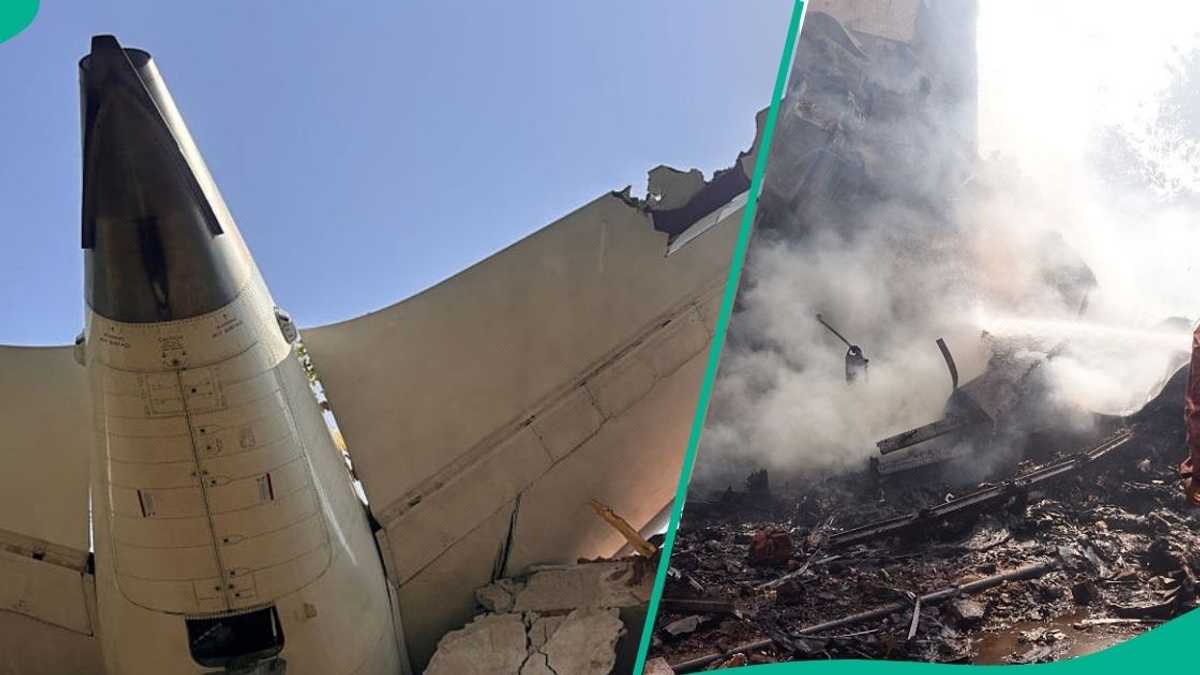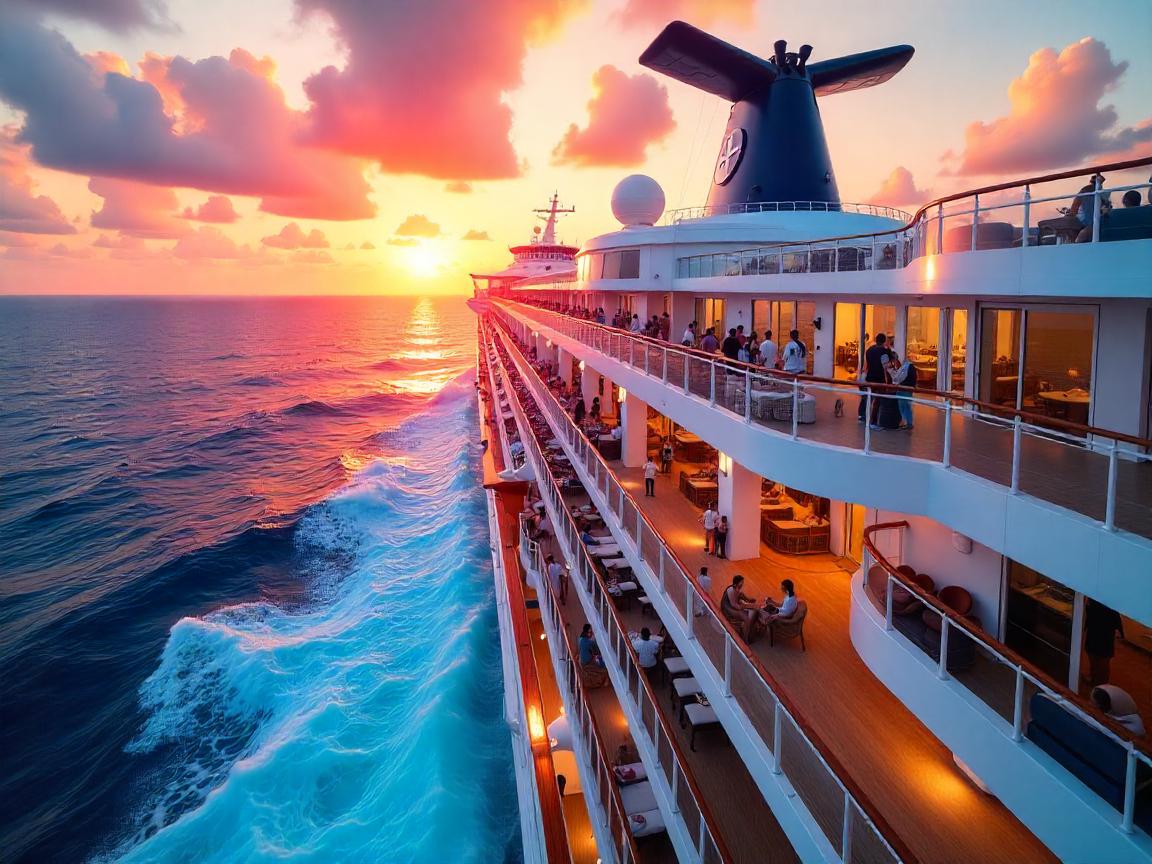Now, Washington Joins Hawaii, Florida, Nevada, Colorado, Utah, Montana in Generating More Revenue from Domestic Tourism Boosting US Travel Industry in This Independence Day, What You Need To Know - Travel And Tour World
Tuesday, July 1, 2025

Washington joins Hawaii, Florida, Nevada, Colorado, Utah, and Montana in a powerful surge that’s shaking the foundations of the American economy in this Independence Day. One by one, these states are generating more revenue from domestic tourism, turning hometown wanderlust into pure economic gold.
Meanwhile, domestic tourism isn’t just a gentle breeze—it’s a roaring storm. Washington steps into the spotlight, joining forces with Hawaii’s tropical allure, Florida’s sun-soaked magic, Nevada’s electric neon, Colorado’s mountain peaks, Utah’s red rock wonders, and Montana’s wild landscapes. Together, they’re boosting the US travel industry like never before.
However, questions bubble under the surface. How is Washington, known for misty coastlines and vibrant cities, now generating more revenue from domestic tourism in this Independence Day? Why are travelers choosing homegrown adventures over distant shores?
Moreover, as Hawaii, Florida, Nevada, Colorado, Utah, and Montana bask in tourism dollars, Washington’s rise adds thrilling new chapters to the story. The US travel industry in this Independence Day stands on the brink of transformation, fueled by road trips, national parks, and local treasures rediscovered.
What you need to know is this: change is sweeping across states from coast to coast. Washington joins the club of tourism giants, and this momentum is rewriting travel trends, shaping businesses, and injecting fresh life into economies that depend on exploration.
Now, the spotlight turns to how these states, together, are redefining what it means to travel—and why the US travel industry’s future has never burned brighter. Stay tuned in in this Independence Day. The story about US Independence Day is far from over.
America gears up for record Independence Day travel, and the hum of engines and rolling suitcases signals a nation on the move like never before. This isn’t just another July 4th—it’s the year when roads, skies, and tourism trends in 2025 are set to be completely redefined.
Meanwhile, highways prepare to transform into rivers of headlights as families chase fireworks and freedom. Airports brace for security lines stretching farther than ever, while hotels scramble to fill every room from coast to coast.
However, beyond the numbers, this travel wave tells a deeper story. It’s about resilience, pent-up wanderlust, and the American spirit roaring back to life.
Moreover, travelers are rewriting the rulebook, mixing business with leisure, and craving unique experiences over the same old paths. The question buzzing everywhere: how will this record-breaking Independence Day reshape the future of how—and why—we explore? The answers begin right here.
Get ready, America. The Fourth of July isn’t just about fireworks this year—it’s about movement. Massive, record-shattering movement.
AAA has unleashed its latest Independence Day travel forecast, and the numbers are jaw-dropping. An estimated 72.2 million Americans will hit the roads, skies, rails, and waterways between June 28 and July 6, 2025. That’s 1.7 million more travelers than last year and a stunning 7 million more than pre-pandemic 2019.
The message is clear: Americans aren’t just back to traveling—they’re determined to break records doing it.
Nothing screams American summer like a road trip, and this year, highways will feel more crowded than ever.
AAA expects 61.6 million people to drive 50 miles or more for the holiday. That’s 85% of all travel happening over the nine-day period. The car remains king, fueled by wanderlust and relatively low gas prices.
However, travelers should brace for frustration. Last year alone, AAA responded to nearly during the July 4th period—everything from dead batteries to flat tires.
Moreover, congestion could hit historic levels. Major cities like Chicago, Los Angeles, Atlanta, and New York are bracing for gridlock, especially on July 3 and July 6 when travelers depart and return in mass waves.
While roads are jammed, skies are no less busy. In fact, air travel this holiday season is set to .
AAA forecasts , a 1.4% increase over 2024. This surge puts even more pressure on airports still adjusting to post-pandemic realities.
Meanwhile, TSA expects to screen an astonishing between July 1 and 7. Security lines could stretch longer than ever, despite efforts to speed processing.
Average round-trip domestic fares hover around $810—a from last year. For many, that’s a price worth paying for the chance to celebrate Independence Day away from home.
However, weather threatens to complicate the picture. Thunderstorms are forecast across the eastern U.S., particularly from Florida up to Boston, which could mean delays rippling through the entire system.
Nothing tests the travel industry like unpredictable weather—and the 2025 Independence Day forecast offers plenty of potential turbulence.
Meteorologists warn of a cold front sweeping the East Coast early in the holiday week. Cities from Tampa to Boston could see storms, lightning, and torrential downpours.
Meanwhile, tropical systems loom over parts of the Gulf of Mexico, threatening the Southeast with showers and strong winds. Texas, too, faces isolated storms amid relentless heat approaching the mid-90s.
Out west, conditions appear clearer, offering some solace for travelers headed toward California, Nevada, or the Pacific Northwest.
However, a single weather system can ripple through the aviation network, causing delays and cancellations even hundreds of miles away from storm zones.
While the national numbers impress, regional data tells a deeper story about how Americans are choosing to travel this year.
These figures reveal that people are sticking closer to home, favoring regional road trips or short flights instead of far-flung escapes.
The travel surge has hotels and rental car companies on high alert. AAA notes hotel occupancy rates for July 4th are trending well above 2024 figures in major cities and tourist hotspots.
Rental cars, especially SUVs and midsize sedans, are in high demand. Prices have already crept up in many markets. Meanwhile, popular destinations like national parks, coastal resorts, and big city attractions could see record footfall.
Airports continue expanding infrastructure to cope with rising passenger numbers. In Houston, for example, officials have deployed 36 new shuttles and launched bus routes to help manage terminal traffic.
Why are so many Americans traveling this year? Several factors converge:
Moreover, AAA data reveals travelers are willing to pay more for unique experiences, comfort, and safety—even as costs rise.
While the booming numbers are good news, they also pose fresh challenges.
Infrastructure strains under the weight of record traffic. Airports grapple with crowd management and staffing. Roadways require emergency response teams on standby for inevitable breakdowns and accidents.
Meanwhile, the threat of weather disruptions or unexpected crises hangs over every travel plan. Travel providers must remain nimble, transparent, and communicative to keep public confidence high.
For travelers gearing up for the big holiday rush, AAA offers critical advice:
This Independence Day, Americans are rewriting the rulebook on travel. It’s not just about fireworks and parades—it’s about reconnecting with the joy of the journey itself.
Whether by car, plane, train, or cruise ship, travelers are embracing adventure in record numbers. The question isn’t whether the industry can keep up—but how it can transform to meet these expectations sustainably.
One thing’s certain: the roads and skies of July 4th, 2025, will be filled with stories, memories, and millions of travelers chasing the freedom the holiday symbolizes.
America’s tourism titans are more than just pretty postcards—they’re the lifeblood pulsing through the nation’s economy. From Hawaii’s sun-drenched beaches to Florida’s electric theme parks and Nevada’s glittering desert neon, these key states power industries, sustain millions of jobs, and spark the dreams of travelers far and wide.
Meanwhile, places like Colorado, Washington, and Alaska reveal that tourism isn’t only about cities—it’s national parks, ski slopes, and remote wonders drawing visitors in record numbers.
However, beneath the beauty lies a serious force shaping how America works and grows. These tourism titans write the rules for economic resilience, innovation, and cultural exchange.
Moreover, as the world craves new ways to travel sustainably, these states stand poised to lead the charge into the future.
In the story ahead, discover how key states fuel not just vacations—but the very engine of America’s prosperity, identity, and the next big adventure.
From the shimmering beaches of Hawaii to the dazzling neon of Las Vegas, the United States thrives on wanderlust. Tourism isn’t merely a pastime—it’s a lifeline that fuels local economies, sustains millions of jobs, and stitches together communities across mountains, deserts, and coastlines.
Yet, behind the glossy travel brochures lies a powerful economic engine. Certain U.S. states depend on tourism as a , generating billions in revenue and shaping how America defines itself to the world.
As travelers pour back into airports, highways, and national parks, the story of these tourism titans reveals far more than vacations—it shows how tourism remains central to America’s economic heartbeat.
Nowhere is tourism’s influence more profound than in . Picture-perfect beaches, turquoise waves, and volcanoes lure visitors from every corner of the globe.
But it’s not just about beauty. Tourism accounts for , and over 9 million annual visitors contribute a staggering in spending. Jobs in hotels, tour operations, transportation, and restaurants all rely on visitors landing at Honolulu or Maui airports.
When the pandemic halted travel, Hawaii felt the economic shock immediately. Empty beaches translated into shuttered businesses and soaring unemployment. This underscored how vulnerable Hawaii’s economy is—and how vital tourism remains for its future.
If Hawaii is a tropical icon, is a tourism juggernaut. It’s impossible to think of the Sunshine State without imagining rollercoasters, cruise ships, and white-sand beaches.
Tourism in Florida is more than an attraction—it’s an economic powerhouse. It generates around , supporting nearly 13% of its workforce. In 2019, over flocked to Florida, pouring close to into its economy.
From Orlando’s theme parks to Miami’s nightlife and the Everglades’ natural wonders, Florida has mastered the art of attracting both domestic and international travelers. But as hurricanes, climate change, and shifting travel trends loom, Florida’s tourism industry faces a future demanding both resilience and reinvention.
In the shimmering desert, rises as a monument to entertainment. Las Vegas alone symbolizes the state’s identity—a place where neon lights never dim, and fortunes change in a heartbeat.
Nevada doesn’t just host tourists; it relies on them. Tourism forms a critical piece of the state’s economy, with casinos, resorts, conventions, and entertainment generating billions annually. The Las Vegas Strip employs tens of thousands and remains a vital revenue source for the state government.
Yet, even Nevada has learned the hard way that tourism is a delicate industry. During COVID-19, deserted casinos and empty hotels showed how dependent the Silver State is on visitors. Now, the challenge is to diversify experiences, appealing to new demographics and ensuring the tourism flame never goes out.
stands as a titan among tourism states. In 2024 alone, visitors spent an eye-watering in the Golden State. From Hollywood’s allure to Yosemite’s granite cliffs, California’s tourism ecosystem spans urban glamor and raw wilderness.
Tourism creates jobs, fuels tax revenue, and drives ancillary industries like film, wine, and technology. Whether visitors are exploring Napa Valley vineyards or strolling San Francisco’s waterfront, they contribute to California’s dynamic economy.
However, challenges remain. High costs, drought, and wildfires force California to balance sustainability with its endless appetite for tourism dollars. As the state innovates with eco-friendly travel initiatives, its tourism model may become a blueprint for others.
feels like the edge of the world, and that’s precisely why millions visit each year. Cruise ships deliver waves of travelers eager to witness glaciers calving into icy waters or bears roaming in national parks.
Tourism is not merely seasonal—it’s vital. Alaska’s economy leans heavily on the influx of visitors who sustain communities, purchase local crafts, and fuel transportation businesses.
While oil and fishing remain economic pillars, tourism offers Alaska a sustainable way to showcase its pristine beauty. However, climate change threatens the very landscapes drawing travelers north. The state now wrestles with preserving its wild identity while keeping the tourism pipeline flowing.
In the American West, states like thrive on the lure of national parks, hiking trails, and powdery ski slopes.
These states prove that tourism isn’t just a city business. It’s a lifeline for small towns and gateway communities, fueling jobs and sustaining cultural heritage.
While the coasts steal headlines, states like , , and quietly reveal tourism’s hidden power.
Even in traditionally industrial regions, tourism acts as an economic stabilizer, diversifying economies and preserving local traditions.
Washington is where snowcapped volcanoes meet urban skylines, and rainforests give way to high desert plains. It’s a state stitched together by contradictions—a place where you can sip world-class wine one day and hike through dripping moss forests the next.
But more than that, Washington has soul. It’s quirky, rugged, innovative, and impossibly beautiful. Ready to explore the best places in Washington? Let’s dive in!
No guide to Washington is complete without starting in .
Seattle feels alive. Steam curls from coffee cups as ferries glide across Puget Sound. The Space Needle pierces the skyline, while towering glass sculptures bloom at the Chihuly Garden and Glass.
But Seattle isn’t just tourist spots. Wander through quirky neighborhoods like Capitol Hill, alive with vintage shops and neon dive bars. Or lose yourself in Pike Place Market’s chaos—fishmongers toss salmon while the scent of fresh flowers and cinnamon buns fills the air.
Don’t skip the Museum of Pop Culture for its electric exhibits on music legends, sci-fi, and gaming culture. And if you’re craving fresh air, Green Lake Park or Discovery Park offers miles of urban trails.
Tip: For jaw-dropping city views, ride the ferry to Bainbridge Island at sunset. The skyline looks like it’s on fire in the best way.
From Seattle, cast your eyes south. Rising 14,410 feet above sea level, is Washington’s icon. Snow-clad and glorious, it’s visible from miles away on clear days.
Mount Rainier National Park is a wonderland of glaciers, wildflower meadows, and towering forests. In summer, Paradise’s meadows erupt in a riot of color—lupine, paintbrush, and avalanche lilies dancing beneath the peak.
Hikers flock to the Skyline Trail for a relatively accessible loop with blockbuster views. Meanwhile, seasoned mountaineers attempt the summit climb—a serious undertaking requiring training and guides.
Winter transforms the park into a snow-draped dreamscape perfect for snowshoeing and cross-country skiing.
Tip: Sunrise Visitor Center offers fewer crowds and equally dazzling views. Arrive early for parking, especially in peak summer.
Ever dreamt of wandering a Bavarian village—without leaving the U.S.? Head east to , a mountain town tucked amid the dramatic peaks of the Cascade Range.
Every storefront in Leavenworth wears timbered Bavarian façades. Shops sell lederhosen, cuckoo clocks, and chocolate-dipped pretzels. Polka bands play in the town square.
But Leavenworth isn’t just kitsch. It’s also a hub for outdoor adventures. Hike the Icicle Gorge Trail for riverside views or scale the nearby Enchantments—a series of alpine lakes so turquoise they look photoshopped.
Visiting in winter? Leavenworth goes full fairytale. Lights twinkle on snow-dusted rooftops, and horse-drawn sleighs clip-clop through the streets.
Tip: Book hotels early for festival weekends like Oktoberfest and Christmas Lighting Festival—they sell out fast.
On Washington’s western edge, is like a greatest-hits album of Mother Nature.
Start at the Hoh Rain Forest, where moss drapes every branch and ferns unfurl under towering trees. It’s silent except for the whisper of rain and distant bird calls. Hike the Hall of Mosses Trail to feel like you’ve stepped into a fantasy novel.
Craving salt air? Head to Ruby Beach, where sea stacks rise from crashing waves and driftwood piles up like giant matchsticks. At low tide, tidepools reveal a secret world of anemones and starfish.
Then ascend to Hurricane Ridge for panoramic mountain views—and maybe a snowball fight, even in July.
Tip: Olympic National Park is huge. Pick one or two regions to explore rather than trying to see it all in one trip.
Cross the Cascade curtain and discover a whole new Washington. Eastern Washington is drier, sunnier, and brimming with surprises.
Enter , a city built around a thundering waterfall. Downtown Spokane pulses with indie coffee shops, art galleries, and farm-to-table dining. Riverfront Park is its crown jewel, where you can ride a historic carousel or zip across Spokane Falls on a skyride gondola.
Explore the thriving craft beer scene or stroll along the Centennial Trail—a scenic path stretching for miles beside the river.
Tip: Visit in early spring for the Spokane Bloomsday Run, a massive road race that doubles as a citywide party.
may sound funny, but this small town has become a heavyweight in the wine world.
Nestled amid golden wheat fields, Walla Walla boasts over 120 wineries producing bold reds and crisp whites. Tasting rooms line Main Street, each pouring liquid sunshine into generous glasses.
Beyond the vino, Walla Walla offers art galleries, historic architecture, and a laid-back vibe that’s pure Washington charm.
Outdoor enthusiasts can cycle through vineyard roads or hike in the nearby Blue Mountains.
Tip: Time your visit for spring release weekends when winemakers uncork new vintages and the town buzzes with festivals.
Craving island life? Washington delivers with the , a ferry ride away from the mainland but a world apart.
The San Juans are a playground of forested islands, pebble beaches, and emerald waters. On , visit Friday Harbor for shops, galleries, and waterfront dining. Explore Lime Kiln Point State Park, one of the best spots in the world to watch wild orcas from shore.
Kayak among sea lions, cycle quiet island roads, or simply relax with a seafood feast while the sun sets over distant mountains.
Tip: Book ferry reservations in advance, especially during summer. And keep your eyes peeled for whales even from the ferry deck!
North Cascades National Park is Washington’s hidden treasure. Often called the “American Alps,” this park dazzles with jagged peaks, icy glaciers, and endless hiking trails.
Diablo Lake, with its surreal turquoise waters, is Instagram gold. Drive the North Cascades Highway for views that rival anywhere in the Rockies.
Adventure-seekers flock here for rugged backcountry hikes, while others simply soak in the mountain air and wildflower-strewn meadows.
Tip: Services are sparse. Bring food, water, and a full gas tank. And remember—snow lingers late into summer at higher elevations.
Washington’s beauty lies in its contrasts. It’s skyscrapers and volcanoes. Rainforests and deserts. Urban energy and pure wilderness.
Whether you’re sipping coffee in Seattle, hiking through alpine meadows, or spotting whales from a windswept beach, Washington promises endless discovery.
This is a state that rewards curiosity and adventure. So pack your hiking boots, bring your appetite, and let the Evergreen State steal your heart.
Despite its promise, tourism carries vulnerabilities. Environmental threats, over-tourism, climate impacts, and global crises can shatter visitor numbers overnight.
Moreover, sustainability has become non-negotiable. Travelers want meaningful experiences, but not at the cost of nature’s destruction. From Vermont’s eco-initiatives to California’s conservation laws, states are recalibrating tourism for a greener future.
Technology is also transforming the landscape. Digital passes for national parks, AI-driven customer service, and virtual experiences redefine how travelers connect with destinations.
Across America, tourism is more than an industry. It’s an economic lifeline, a cultural tapestry, and a gateway for global connection. States like Hawaii, Nevada, Florida, and Alaska carry tourism deep in their DNA.
Their success ripples through communities, businesses, and even national policy. As the world changes, so too will the strategies ensuring these tourism titans thrive.
One thing remains true: travel is the lifeblood of exploration, adventure, and economic vitality. And in the United States, some states will always shine as tourism’s guiding stars.
«Enjoyed this post? Never miss out on future posts by following us»











